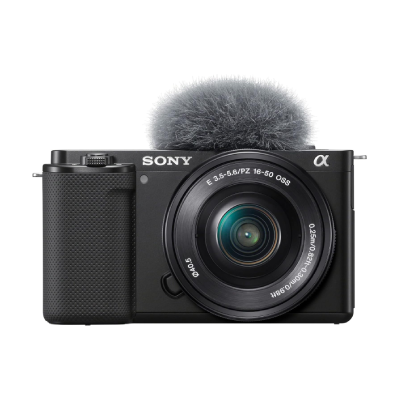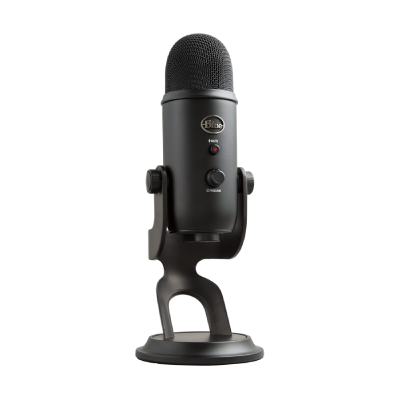For Twitch streamers, bitrate is a critical factor that determines the overall quality of the stream. Essentially, it refers to the amount of data transmitted per second in your stream, measured in kilobits per second (kbps). A higher bitrate generally translates to better video and audio quality, delivering a clearer and more detailed picture and sound to your viewers. However, it also demands more from both your and your viewers' internet connection, potentially leading to buffering or playback issues for those with slower speeds.
Bitrate interacts closely with other stream parameters like resolution and frame rate. For example, streaming at a high resolution or a higher frame rate requires a higher bitrate to maintain quality. On the other hand, a lower bitrate can be sufficient for lower resolutions or less dynamic content, making the stream more accessible to viewers with limited bandwidth. Finding the right balance is key; too low and your stream suffers in quality, too high and you risk alienating viewers with slower internet connections.
Why should you care?
In practical terms, if your stream's bitrate is too high, viewers might experience constant buffering, especially those with slower internet connections, making your stream appear like a slideshow rather than a smooth video. Conversely, a bitrate that's too low leads to a pixelated and blurry stream, where fast-moving scenes become a jumbled mess, diminishing the viewer's experience. These extremes highlight why finding a sweet spot in bitrate settings is crucial for a quality stream accessible to a wide audience.
Internet speed is key
Your internet upload speed is a determining factor in setting your stream's bitrate. For instance, if you have an upload speed of 10 Mbps, a safe bitrate range would be around 6000, utilizing 60% of your bandwidth to avoid overloading your internet connection. This is the highest bitrate supported by Twitch. However, it's also crucial to consider your viewers' download capabilities. While you might be able to stream at a high bitrate, viewers with slower internet speeds could experience frequent buffering.

So the first thing you should do while choosing your bitrate for streaming is measure your upload speed using a website like Speedtest by Ookla - The Global Broadband Speed Test. Remember: some of that upload speed may be occupied by other tasks on devices in your household. Using your wired internet connection instead of Wi-Fi is also very preferable to maximize the results.
Encoding Methods and Their Impact on Bitrate
Understanding different encoding methods is crucial for streamers, as the choice of encoder significantly affects both bitrate and stream performance. The two most common encoding methods are x264 and hardware encoders like NVENC (NVIDIA) and AMF (AMD).
x264: This is a software-based encoder that uses your CPU for encoding the stream. It's known for its high efficiency at lower bitrates, meaning it can deliver good quality even with a lower bitrate, which is beneficial for streamers with limited bandwidth. However, it can be quite demanding on your CPU, especially if you're also running resource-intensive games or applications.
NVENC and AMF: These are hardware encoders built into NVIDIA and AMD GPUs, respectively. They offload the encoding process from the CPU to the GPU. This can be a huge advantage for streamers with powerful graphics cards but less powerful CPUs. Hardware encoders typically perform better at higher bitrates, offering great quality without putting extra strain on the CPU.
Choosing the right encoder depends on your specific setup and needs. If you have a strong CPU and are concerned about bandwidth limitations, x264 might be the way to go. On the other hand, if you have a powerful GPU and want to minimize the load on your CPU, or if you're aiming for higher bitrate streaming, then NVENC or AMF would be more suitable. Experimenting with both types of encoders and monitoring your stream's performance is the best way to determine which one works best for you.
Note: to use a hardware encoder like NVENC and AMF your GPU should support it. While most of modern GPUs do it’s always best to make sure by checking Video Encode and Decode GPU Support Matrix | NVIDIA Developer for NVIDIA. For AMD your GPU should be a part of RX 6000 series or newer.
Optimal Bitrate Settings for Different Platforms
Each streaming platform has its own recommended bitrate settings, and understanding these can significantly enhance your stream's quality. Focusing on Twitch, which is one of the most popular platforms, there are specific bitrate guidelines that vary based on the type of content and desired stream quality.
Gaming Streams: For fast-paced games, Twitch recommends a bitrate in the range of 4500-6000 Kbps for 1080p at 60 FPS, ensuring crisp and smooth motion. However, if your internet cannot support this, dropping to 720p at 30 or 60 FPS with a bitrate of 3000-4500 Kbps still provides good quality without excessive buffering.
Just Chatting and Less Dynamic Content: For content that doesn't involve rapid movement, such as talk shows or vlogging, you can opt for a slightly lower bitrate. Even at 720p, a bitrate of 2500-3500 Kbps will suffice for clear video quality.
Adjusting Bitrate for Platform Requirements: It's important to note that platforms like Twitch have maximum bitrate limits (Twitch caps at 6000 Kbps), and exceeding these can lead to stream instability. Always check the specific requirements of the platform you’re using and adjust accordingly.
Here are the recommended bitrate settings for
Twitch: Broadcasting Guidelines (twitch.tv)

YouTube streaming: Choose live encoder settings, bitrates, and resolutions - YouTube Help (google.com)

Kick: Supports up to 8000 kbps bitrate. So you can use slightly higher values than you would use for Twitch
Facebook Gaming: About HD streaming on Facebook | Meta Business Help Centre

Remember, the optimal bitrate setting isn't just about hitting the maximum allowed. It's about finding a balance that suits your stream's content, your and your viewers' internet capabilities, and adheres to platform guidelines. Regularly test different settings to find what works best for your specific situation.
Tools and Software for Bitrate Testing and Optimization
Choosing the right bitrate for your stream involves more than just guesswork. Thankfully, there are tools and software designed to help you find the optimal bitrate for your setup. These tools analyze your system and network capabilities to recommend the best settings for your stream.
Twitch Inspector: A tool offered by Twitch, Twitch Inspector analyzes your streaming quality and provides feedback on the stability of your bitrate and potential issues. It's a great starting point for Twitch streamers to test different bitrate settings and receive real-time data on their stream's performance.
OBS Log Analyzer: Built into OBS, this feature can test your stream and provide suggestions on optimal settings, including bitrate. It's particularly useful as it directly integrates with your streaming software, making the testing and adjustment process straightforward.

Speedtest by Ookla: While not specifically for streaming, Speedtest can give you a clear idea of your current internet upload speed, which is crucial in determining a suitable bitrate. Remember, your streaming bitrate should generally be around 60-75% of your upload speed to ensure stability.
When using these tools, it’s important to conduct multiple tests at different times of the day, as internet speeds can fluctuate. Also, consider testing under different streaming conditions (e.g., different games or content types) to find a bitrate that provides consistent quality across your streams.
Try what works best for you
Finding the perfect bitrate for your stream is a crucial step towards ensuring a high-quality viewing experience. Remember, the ideal bitrate balances your upload capabilities with your audience's download capacity and adheres to the specific requirements of your streaming platform. Tools like Twitch Inspector and OBS Stream Analyzer are invaluable in this process, providing you with data-driven insights to make informed decisions.
It's highly recommended to test your streaming settings, including bitrate, on a burner account. This allows you to experiment without impacting your main audience and gives you a clear understanding of how various settings perform in real-world conditions. Frequent testing under different scenarios helps you fine-tune your stream to perfection.



